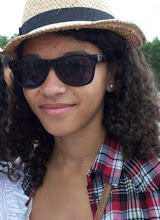Hip hop music is a musical genre which developed alongside hip hop culture, and is commonly based on concepts of loop, rapping, DJing, scratching and beat boxing. The music is used to express concerns of political, social and personal issues. Hip Hop began in the Bronx, in New York City in the 1970s primarly among African Americans. However over time as hip hop has evolved there have been a number of issues raised about the Hip-Hop style lyrics, and videos. The images in hip hop and rap seem to portray women of all ethnicities as sexual objects and depict the exploitation of and violence against women. The image of dozens of semi-naked women dancing provactively around one blinged-out rapper has become standard in music videos. Similarly, pimps have morphed from abusive, controlling and criminal men to trndy, stylish icons. Hip hop has become a mess of unrealistic and arguably dangerous images of female sexuality. 50 Cent's video to his hit single P.I.M.P reflects these concerns.
The representation of females in 50 Cent's video P.I.M.P featuring Snoop Dogg is very negative to say the least. Women are shown as objects or decorations, commodities, passive, slaves, dressed in underwear and are use of a vajeristic "male gaze". The women are scantily clad while the men are covered, maybe reflecting a slave like relationship. The master is well dressed while the slaves, in this case the women wear hardly any clothes. Seductive movements by the women where they massage 50 Cent sexualises the video. 50 seems unbothered and unaffected by this, higlighting that he is used to this treatment. The slave representation is brought up again very strongly where the women help to dress 50 , pour his drink and serve him. There is also a shot of two women on leads being "walked" by another woman. This devalues the status of women in the video. They are seen as animals by the men and the men have control over them because of the leads. There is a reference to violence by Snoop Dogg, "I'm bout to show you how my pimp hand is way strong". He mimicks hitting the woman. This glorifies violence towards women. Full body shots of women shows their full figure which again sexualises their status in the video and there are revealing low angle shots of a woman's behind.
However the representation of men in the video is the complete opposite. Low camera angle shots are looking up at them making the audience feel inferior and increase the male power and intimidation. The colour white is used to connote that 50 is "god" when really he is the opposite as he is glorifying pimps. Narcissism is used as slow motion lingers on the muscular physique of 50 making him seem tough and powerful. Close ups of status symbols are used throughout alongside the setting of a luxurious mansion to signify power, wealth and ownership - symbols of the American Dream.
